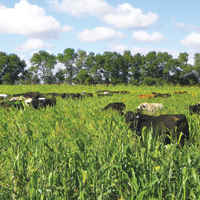This grazing and cover crop system is producing some impressive numbers
By Gabe Brown
Phone calls, emails and even a few old-fashioned letters — all say the same thing. As I travel presenting at conferences and workshops, the statement comes up repeatedly.
If only I had a dollar for the number of times I had people tell me, “Gabe, you just don’t understand that our soils are not like yours.” I have learned to listen patiently (OK, sometimes not so patiently) as these people tell me all the reasons my soils are productive, and theirs are not. Continue reading “Can we really regenerate our soils?”






